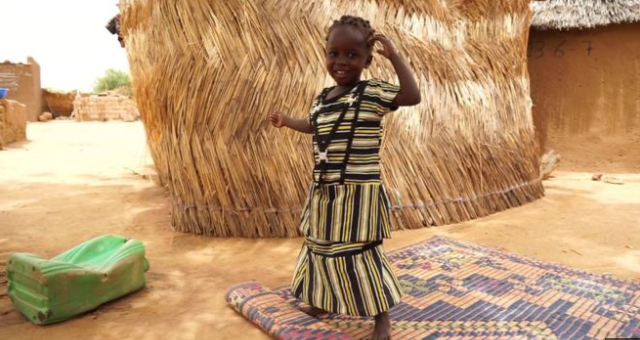At the point when Marieta was only a year old she built up a high fever and turned out to be extremely unwell.
Her family thought she had fallen under a revile that in parts of provincial Burkina Faso is accepted to happen when a flying creature flies over a youngster snoozing outside.
Her dad, Tibandiba Lankoande, spent the vast majority of his cash on conventional cures yet this didn’t work and on the 6th day she fell into a trance like state.
“That is the point at which I heard a message on the radio disclosing how to perceive the signs and side effects of jungle fever,” he reviewed.
“On the off chance that I hadn’t heard that radio message she wouldn’t be alive today.”
‘Best quality level’ preliminary
The radio messages were a piece of a colossal preliminary driven by Development Media International (DMI), which looked to see if broad communications could affect individuals’ wellbeing.
Roy Head, DMI’s CEO, stated: “In the event that you are the priest of strength of a common African nation and you have $30-$40 per head of populace to spend on wellbeing, you are truly choosing who lives and who kicks the bucket, thus anything that you spend your cash on must be demonstrated.
“What’s more, it has not been demonstrated up to this point in a best quality level logical preliminary that broad communications can change practices, not to mention spare lives.”
The association created 150 diverse one-minute radio messages concentrating on the indications of intestinal sickness, loose bowels and pneumonia – three of the greatest enemies of kids under-five in the nation. The messages were communicated crosswise over seven neighborhood radio stations, 10 times each day, for a long time.
The outcomes, distributed in the diary BMJ Global Health, demonstrate that in the main year of the preliminary the quantity of interviews at nearby wellbeing centers for indications of jungle fever went up by 56% contrasted and regions where the messages weren’t communicate.
Discussions for pneumonia expanded by 39% and looseness of the bowels by 73%.
Furthermore, however the analysts couldn’t demonstrate this straightforwardly, they utilized PC displaying to appraise that their undertaking spared 3,000 lives – all of kids matured under five.
Nearby and intelligent
Social clinician, Dr Jennifer Sheehy-Skeffington, of the London School of Economics and Political Science, who takes a gander at the brain research behind conduct change, said she was astonished at how denoted the adjustment in conduct was.
She told the BBC: “Individuals were expanding by an enormous sum the probability that they would get these side effects looked at.”
She feels some portion of the achievement is on account of instead of simply depending on one-way correspondence, scientists created consistent intuitive demonstrates that enabled individuals to examine their inquiries and concerns.
Dr Sheehy-Skeffington included: “They likewise worked with neighborhood individuals in creating contents, dramatizations and stories that are extremely captivating and get individuals’ feelings going and influence it substantially more likely that to individuals will change conduct in light of tuning in, rather than simply suspecting that it is simply data given to them from some master.”